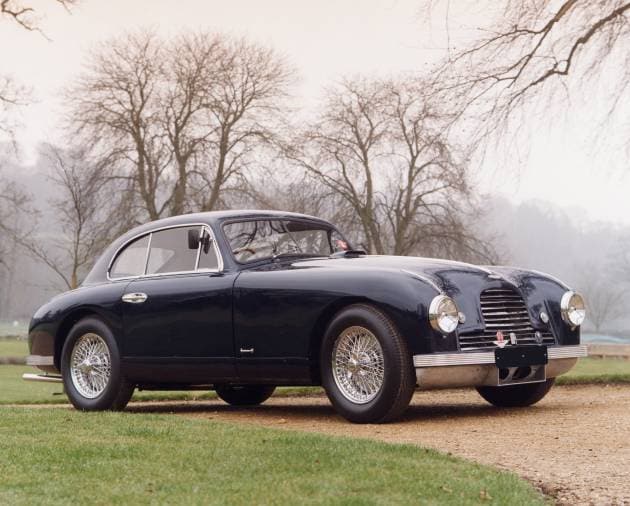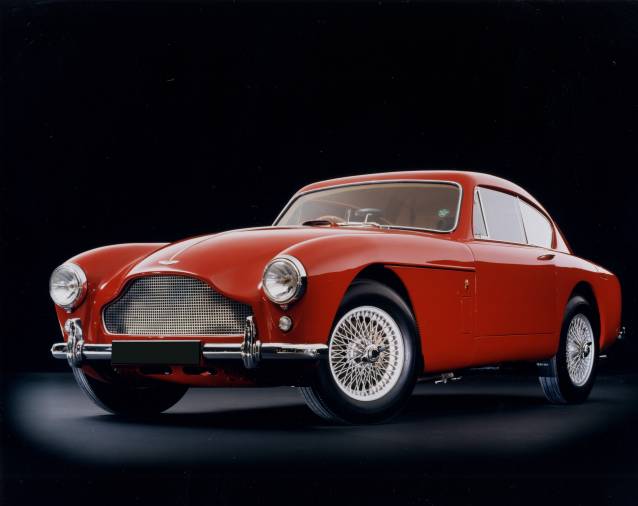Aston Martin DB generations explained
With the introduction of the new Aston Martin DB12, let's look back at Aston Martin's iconic DB cars from the past 7 decades.
Aston Martin DB2: 1950-1957
The DB2 was the first Aston to bear the DB nameplate. It was the first Aston Martin to use a Lagonda engine, a 2.6-litre straight-6. The vehicle debuted at the New York Motor Show in April 1950, partially because Aston wanted to export as many cars as possible to ensure steel supplies, which were still scarce following World War II. The 2-seater coupe had great success in the 1950 Le Mans 24-hour race.
Aston Martin DB Mark III: 1957-1959
The DB Mark III was the successor of the DB2, and it had the same 2.9-litre straight-6 Lagonda engine. Disc brakes, an available automatic transmission, and a dual-exhaust system were among the mechanical upgrades.
Aston Martin DB4: 1958-1963The DB4 engine was the first Aston Martin engine built entirely by David Brown - a 3.7-litre straight-6 created by famed Aston engineer Tadek Marek. This engine had a peak speed of more than 220 kmph. There were five series of DB4, each with its own set of styling cues.
Aston Martin DB5: 1963-1965The DB5 was the first of the James Bond cars. It came with a 4.0-litre straight-6 engine and a five-speed transmission. More significantly, the stunning bodywork - created using the Superleggera (Super lightweight) patent technology - has become a driving symbol and one of the most recognizable designs in the automotive world. Since then, the DB5 has appeared in other Bond flicks. Starting with Goldfinger and then Thunderball, Goldeneye, Tomorrow Never Dies, Casino Royale, and Skyfall.
Aston Martin DB6: 1965-1971Clearly based on the DB5, the DB6 debuted in October 1965 with a wider wheelbase and a somewhat higher roofline, providing more head and leg room in both front and back seats. The main outward difference was the 'sawn-off' Kammeffect tail with its noticeable lip spoiler, which had been proved in wind tunnel studies to provide a considerable - over 30% - decrease in lift at the rear wheels.
Aston Martin DB7: 1994-2004Intended as a smaller, more affordable Aston Martin to be offered alongside the bigger V8 vehicles, it drew on new owner Ford's facilities and relationships with Jaguar to create a model that had many similarities to the Jaguar XJS. It began with a supercharged straight-6 engine and progressed to a V12 engine choice. With both engines, a convertible Volante variant was offered, and the DB7 generated the DB7 Zagato, a unique coach-built car restricted to only 200 examples.
Aston Martin DB9: 2004-2016The 2+2 DB9, the direct successor to the DB7, was the first car constructed in Aston Martin's new facility in Gaydon, Warwickshire. Why is there no DB8? The new automobile was seen to be so far ahead of the previous one that Aston Martin determined that a simple sequential numbering system would be unsuitable. The DB11 is a timeless blend of a sophisticated chassis and 6.0-litre V12 encased in a magnificent grand tourer body style and has proven to be one of Aston Martin's most successful automobiles. The DB9 has received several special editions, ranging from a Year of the Dragon model with 24-carat gold emblems and unique embroidery on the headrests to stripped-down racing vehicles. There's also a Volante convertible, which manages to be even more stylish than the coupe.
Aston Martin DB11: 2016-presentThe DB11 is the real successor to the DB9, using turbochargers for the first time in the model line's history. The 5.2-litre V12 is joined by new styling and a vastly enhanced interior. The standard DB11 was superseded in Aston Martin's lineup by the DB11 AMR after only 20 months. It added 30 horsepower and substantially improved the suspension geometry.
Aston Martin DB12: 2023 onwardsThe DB12 has just been showcased and the Aston Martin DB12 retains the shapely proportions while introducing a fresh design language, additional tech features, and a significantly more powerful twin-turbocharged V8. The Aston Martin DB12 replaces the V12 engine with a V8 engine from Mercedes-Benz's AMG division. The 4.0-litre twin-turbocharged V8 engine is combined with an 8-speed automatic transmission and is tuned to provide far more power than previously, making the car even more powerful than the DB11 V12. The coupe has a huge drive-centric centre console in the cockpit. The new system has a 10.25-inch touchscreen and works with both Android Auto and Apple CarPlay. Aston Martin claims that this is the company's first in-house built infotainment system.